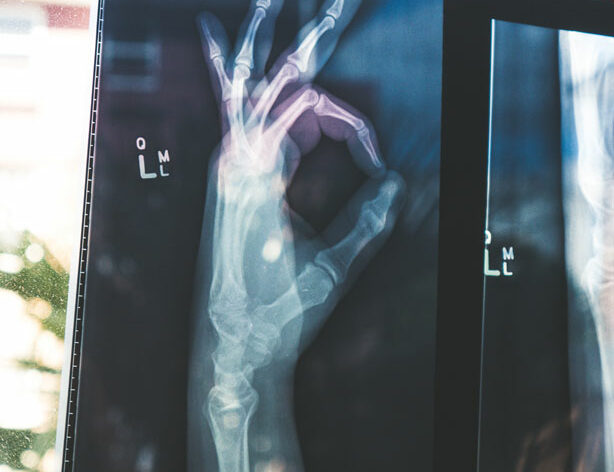Let’s dive into hearing from young people about their insights from living with persisting pain, how they understand and make sense of their pain and how these insights can help you understand your pain and get back on track.
This module adds another tool to your Pain Management Toolkit.
Young people share their insights into living with persistent musculoskeletal pain
We have listened to young people describe the complex, multi-dimensional and disruptive impact of living with persisting musculoskeletal pain.
Here are key insights we have learnt from listening to young people living with musculoskeletal pain:
- Pain impacts on every aspect of our young lives, particularly our capacity to study, work, socialise and manage the financial burden of pain
- Pain is a unique experience for each person
- There’s a two-way street between pain and psychological wellbeing. We commonly experience both pain and mental health conditions together
- Health professionals often fail to legitimise our pain. We are told “…you are young, you should be over this”. This is especially true when there is no clear diagnosis or evidence of tissue damage (e.g. chronic low back pain)
- We are uncertain about why our pain is persisting – no one has explained it well
- There’s a lack of validation from health professionals, and this has a corrosive effect on our lives, further fuelling our fears about our future
- Health services and resources tailored to our specific needs and preferences are lacking
- Digital technologies can provide us with accessible, reliable resources to support us in developing shared solutions to improve our health and wellbeing
In this next section, we delve into making sense of your pain, what factors influence your pain experience, why pain varies and how you can manage your pain well.
In this video, young people share their experiences of how they make sense of their pain and talk about their management tips.
Pain has a powerful protective function – this can be both helpful and unhelpful
Most of us have experienced pain when we’ve fallen over, sprained an ankle, had an injection or operation, or when we’ve touched something scorching hot. This pain is referred to as acute pain.
We adapt how we move, what we feel (it hurts/it’s sensitive), what we think (will this get better/I’m scared to move in case I do more damage), what we do (limit activity and work/study) and what we don’t do (usual socialising).
Adapting what we do when there is ‘acute’ (short-lived) pain is helpful because it allows us to recover well and quickly. ‘Acute’ pain includes conditions such as tissue sprain, infection, or inflammation.
- If we sprain our ankle, the ankle may be swollen and painful or bruised. To protect the sensitive tissues, we might limp for a few days.
- If the sprain is severe, or the ankle is broken, crutches might be needed for a short period.
- Most times our pain eases; the bruising, swelling and pain gradually ease, the broken bone heals, and we start walking more normally.
What’s hard to understand is why we get pain for no apparent reason. A good example here is when you experience a headache or tummy pain. For both these examples:
- Pain often starts for no apparent reason, or sometimes happens when we are really stressed out…but there’s no tissue damage.
- Usually pain passes, and we carry on with our day-to-day lives. There are some headaches (like migraines) that are different, or tummy pain that can be associated with other medical conditions but mostly, headaches and tummy pain pass quickly.
- We recognise there is no tissue damage and we interpret the headache or tummy pain as a ‘normal’ experience, we’re not fearful and we know we’ll recover.
What about pain that sticks around for longer?
Persisting pain lasts longer than 3 months and affects about 1 in 5 young people. Persisting pain really gets in the way of life: pain impacts how we move, think, feel and act…and what we can do in life.
- With autoimmune conditions like Juvenile Idiopathic Arthritis, it’s common for young people to experience persisting (chronic) and recurring pain.
- For young people living with Chronic Widespread Pain or Low Back Pain, this can be harder to understand and make sense of as there’s often no clearly identifiable condition or tissue damage.
Next up we look at the invisibility of pain and provide helpful tips to understand your pain.
My pain is invisible – how do I explain the impact of my pain to others?
This is really tough. Not being able to see pain, makes it really hard to communicate with others about your pain, and explain how pain impacts your life. This makes it hard for others to understand what you’re going through.
You might have been told ‘pain is in your head’ or people may not believe you – sadly this is not uncommon. This is an incredibly frustrating experience.
If this experience sounds familiar to you, please take time to check out the content young people have created with us to address this issue: helping others to help you.

Would xrays or other imaging help explain my pain?
Xrays, MRI or CT scans and ultrasound images may be recommended so that you and your team can check for any specific tissue conditions.
- Most times, unless screening is indicated for specific rheumatologic conditions, serious tissue damage (what is called ‘red flags’) or significant physical trauma, imaging is not recommended for young people with musculoskeletal pain.
- Tissue changes shown on xrays don’t always match up with a person’s pain experience. That may sound odd, but it’s true because lots of factors affect our pain experience.
- Tissue changes shown on xrays and imaging are often ‘normal’ findings that can be expected as we age – yes, even in young people.
- Scans and xrays can show findings like disc bulges, joint changes or tendon degradation in young people who are not experiencing pain.
- Imaging & xrays do not show pain.
"Ask your health professional: ‘Are these imaging changes normal’?"
Well-trained clinicians will:
Listen to you and your concerns
Explain the imaging findings in the context of your pain experience and current evidence about interpreting imaging findings in musculoskeletal conditions
Help work out with you what triggers your pain
Help plan with you how to achieve your goals and move towards recovery
Why does my pain keep changing?
Pain can fluctuate from moment to moment, hour to hour, and day to day. This is because lots of factors influence people’s pain experiences. Factors include:
- Condition-specific biologic factors (like inflammation)
- Stress (physical, emotional, social and environmental)
- Lifestyle factors (nutrition, physical activity, sleep, how sedentary we are)
What’s reassuring is knowing that our body systems are plastic, not ‘hard-wired’. This means our systems are capable of change in response to different contexts.
This plasticity opens new ways for us to learn how to manage pain with confidence and build resilience, to learn new ways of moving and responding to physical, emotional and environmental stressors.
It’s helpful to know that pain variations:
- Are common
- Don’t usually indicate tissue damage
- Commonly reflect an increase in tissue sensitivity in response to day-to-day stress which is usually temporary
- Can reflect a change in disease activity in Juvenile Idiopathic Arthritis
- Reduce the better we get at understanding and managing what triggered a ‘flare up’
- Are well-managed with graduating activities and keeping active and engaged
We’ve developed practical content to help you get back on track, manage pain variations and safely graduate your activities. Try the movement with pain and mindfulness and pain modules. If you prefer gentle movements, then yoga and pain would be a good option, too.
In this section, we guide you through a whole-person approach to care. Pain affects our whole person – that is why pain care should take a whole-person approach.
Why take a whole person approach to my care?
Our whole person is affected when we experience pain. This is because all our systems usually work very closely together, in a coordinated way, to keep us healthy.
"Our whole person is affected when we experience persisting pain"
Factors that can influence our pain, include:
- Our emotions (distress, anxiety, low mood, lack of motivation)
- Our fears (not feeling safe because of pain; need to overprotect; fear of further damage to our bodies; trauma-related pain)
- Our stress levels
- Our sleep patterns
- Not moving enough or being physically active (avoidance due to pain or fear of pain)
- Overdoing movement and activity (pushing through regardless of pain)
- Our beliefs about pain (it is not safe to move; pain means more damage)
- A sense of hopelessness and helplessness or loss of control
- Social isolation (a burden to family or friends)
- Our vulnerabilities (pre-existing risk factors for pain)
- Our resilience, good support from family, and positive study or work environments, can all buffer our pain experience
For each person, the mix of these factors can influence our pain experience. This means each person’s pain experience is multidimensional and unique. That is why care needs to take a whole-person approach – and be tailored to meet each person’s unique needs.
If you want to work out your specific needs, check out our Örebro questionnaire to learn more.
Working out the factors that affect your pain
Working out what these factors are – your pain triggers and what eases your pain, why your pain varies – will be an important step in learning how to understand and manage your pain.
While you may be able to do this alone, we highly recommend doing this with the support from an experienced clinician.
A health professional with pain management expertise can help you to figure out which factors influence your pain and work out a plan together to help you move towards recovery. This helps get you back to the things you enjoy.
Condition-specific factors may be very important. For example, in young people with Juvenile Idiopathic Arthritis, specific medicines (called disease-modifying anti-rheumatic drugs or DMARDs) are really important to control the arthritis well.
"Managing pain means taking a whole person approach to care"
Taking a holistic approach to your pain care
We have discussed that lots of factors can affect pain experiences. So, it makes sense that no ‘one size fits all’ when it comes to quality care.
Good quality pain care is care that:
Supports you as a whole person
Is safe
Is effective
Is tailored to your needs and goals.
Holistic personalised care is developed in partnership with you and an experienced clinician who can help you implement the plan, support you, monitor and adapt the plan with you.
Identifying the factors that contribute to your pain, means planning care that can address each and all of these factors in a way that best meets your needs.
Depending on your needs, care planning might be multimodal – this means we use a number of different approaches combined to form a holistic care plan. For example, working to improve your sleep, reduce distress and fear, learn ways to safely graduate your movement and activity or exercise, or support you to cope with pain.
Depending on the mix of factors in your case, your care plan might be supported by 1 or 2 key health professionals, or you may need a small team of health professionals with different skills working together with you.
This is commonly referred to as multidisciplinary or interdisciplinary care. Simply put, it is coordinated team care. Check out the fact sheet on using a pain team.
What does high quality supportive care mean?
High quality pain care is safe, effective, holistic, tailored to your needs and planned with you. Care should involve:
A partnership with you
Creating a safe consultation space that respects your specific care needs, listens to you, validates and respects your pain experience
Learning from you what is important in your life
Supporting you to achieve your goals and manage the bumps along the way
How do I know I am getting quality care?
High quality care means addressing all the factors related to your pain. This involves holistic care that helps you get back to doing what matters to you with confidence.
Holistic care approaches are covered in our management modules and include:
- Psychological and behavioural approaches – see approaching pain
- Movement based approaches – see movement with pain and yoga and pain and getting back to what you want to do activities
- Sleep hygiene – see sleep and pain
- Relaxation – see mindfulness and pain
- Social support – see helping others help you
Not everyone needs all of these care components. Others might need more of these components or care might need to be ‘stepped-up’ with a few different health professionals to support you. This often includes specialists, such as pain medicine doctors or rheumatologists.
Importantly, you might need to take some time to find the right pain care team for you – it might take a few attempts to find health professionals you feel comfortable with a gel with. And this is OK!
If you’re not sure about what you need, try jotting down what care you think you need and take the plan to your health professional to discuss together.
Pain medicine use should be discussed with your GP or pain medicine specialist, or with your rheumatologist if you have a rheumatologic condition, like Juvenile Idiopathic Arthritis.
You can also check out our medicines module for more info.

Remember when making sense of your pain
Being able to understand your pain, helps build your confidence and skills to manage your pain
Understanding the factors that affect your pain (helpful and unhelpful) is key to building your confidence and getting back to what you want to do
Holistic care that addresses your specific needs and goals is more likely to be effective
Pain can be well managed when care planning is tailored to your needs and goals and you are well supported
Experienced clinicians can partner with you to support and help you
Want more information?
Here are some helpful resources to help you increase your knowledge about pain and develop strategies to manage your pain. Alternatively, if you want to talk to someone, please seek further assistance.
Finding a health professional team who can support you in your care is important. If you need expert help, ask your health professionals for their help or their recommendations for clinicians working in pain care.
Related management modules
References
- Slater H, Jordan JE, Chua J, Schutze R, Wark JD, Briggs AM. Young people’s experiences of persistent musculoskeletal pain, needs, gaps and perceptions about the role of digital technologies to support their co-care: a qualitative study. BMJ Open 2016; 6(12): e014007. [PubMed]
- Slater H, Jordan JE, Chua J, Schütze R, Briggs AM. Young people’s experiences of living with persistent pain, their interactions with health services and their needs and preferences for pain management including digital technologies. Melbourne: Arthritis and Osteoporosis Victoria and Arthritis and Osteoporosis Western Australia, 2016. [Access Painful Transitions Report]
- Caneiro JP, Smith A, Bunzli S, Linton S, Moseley GL, O’Sullivan P. From Fear to Safety: A Roadmap to Recovery From Musculoskeletal Pain. Phys Ther 2022; 102(2). [PubMed]
- Lin I, Wiles L, Waller R, Goucke R, Nagree Y, Gibberd M, Straker L, Maher CG, O’Sullivan P. What does best practice care for musculoskeletal pain look like? Eleven consistent recommendations from high-quality clinical practice guidelines: systematic review. Br J Sports Med 2020; 54(2): 79-86. [PubMed]
- Slater H, Stinson J, Jordan JE, et al. Evaluation of digital technologies tailored to support young people’s self-management of musculoskeletal pain: a mixed-methods design. Journal of Medical and Internet Research 2020. [PubMed]
